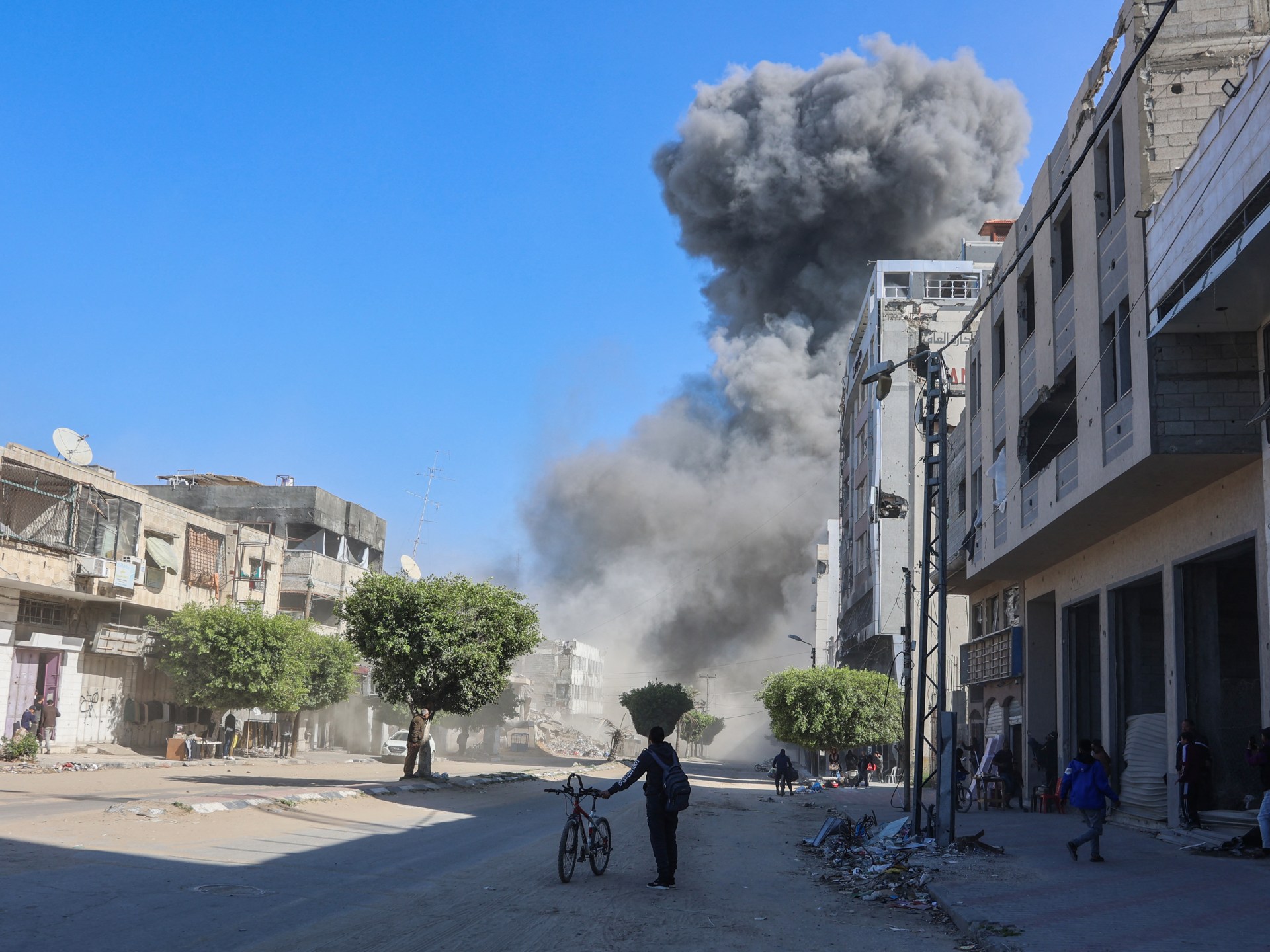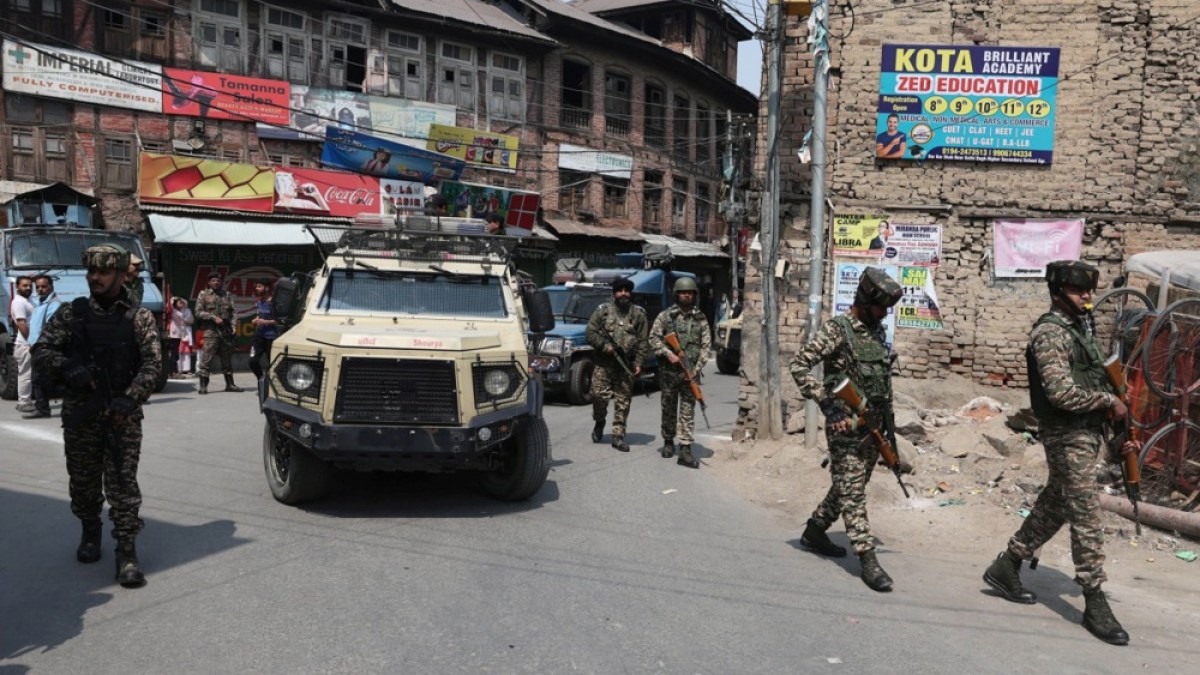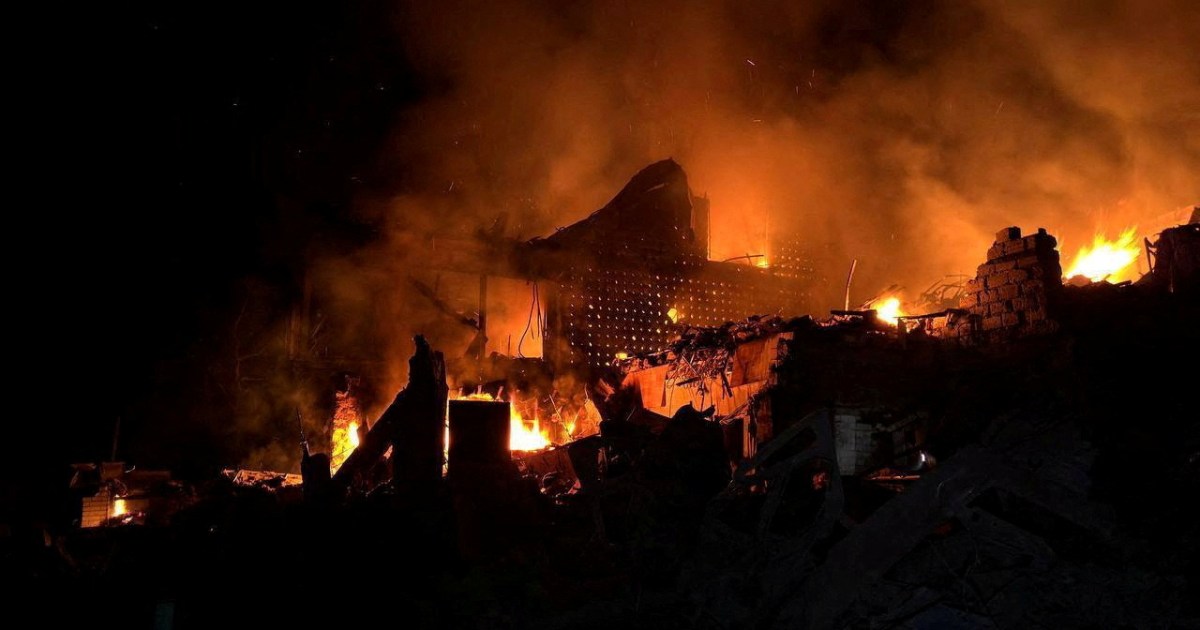

Israel has now restricted Palestinians’ access to roughly two-thirds of Gaza, either by declaring large areas as no-go zones or issuing forced displacement orders, according to the UN Office for the Coordination of Humanitarian Affairs (OCHA).
Among the restricted areas is a large swath of southern Rafah, where Israel’s military issued a new displacement order on March 31, declaring it was returning to “fight with great force”.
list 1 of 4
Israeli attacks on three schools in Gaza City kill at least 33 Palestinians
list 2 of 4
Palestinian aid workers likely shot ‘execution style’, forensic expert says
list 3 of 4
Gaza faces ‘largest orphan crisis’ in modern history, report says
list 4 of 4
Photos: Overnight Israeli attacks hit tent shelters, homes in Gaza
end of list
The restrictions also cover parts of Gaza City, where Israeli troops launched a new ground offensive on Friday morning to expand their “security zone”.
These escalations have triggered one of the largest mass displacements of the war, pushing hundreds of thousands of Palestinians – many already displaced multiple times – to flee yet again.
“Our biggest struggle now is displacement,” Abu Hazem Khalef, an elderly man displaced from Gaza City’s east, told Al Jazeera. “We have no idea how to handle this situation. I’m heading west of Gaza City, looking for any street where I can set up a tent.”
Advertisement
“We are being forced to leave and we don’t even know where to go,” added Mahmoud al-Gharabli, another displaced Palestinian. “We are exhausted and completely broken.”
The military push follows Israeli Prime Minister Benjamin Netanyahu’s threat to intensify the offensive to pressure Hamas into further concessions.
“We are now dividing the Strip and we are increasing pressure step by step so they will give us our hostages,” Netanyahu said in a video message on Wednesday.
On Friday, Israeli forces continued devastating aerial attacks, killing at least 30 people since dawn, according to local medical sources and Gaza’s civil defence agency. This followed an intense day of bombardment on Thursday that left 112 dead – many of them women and children.
Conditions inside Gaza City’s al-Ahli Hospital, also known as the Baptist Hospital, where many victims in the north were taken, are “nothing short of apocalyptic,” Al Jazeera’s Hani Mahmoud said after visiting the facility.
“We are seeing bodies laid on the ground and they are counted in the 10s,” Mahmoud said. “We’ve seen doctors, they are helpless. They don’t know what to do. They are unable to save lives given the dire situation inside the hospital.”
Israel resumed its attacks in Gaza on March 18, shattering a two-month ceasefire after talks with Hamas broke down over the next phase of the agreement.
Netanyahu wants Hamas to release the 59 remaining Israeli captives in exchange for Palestinian prisoners and aid, but without Israel committing to end the war or pull out troops. For a final ceasefire deal, Netanyahu insists Hamas must disarm – a demand the group calls a “red line” – and has openly backed plans for Israel to seize security control of Gaza and push Palestinians out.
Advertisement
Hamas calls for a return to the previously agreed three-stage ceasefire framework and has offered to free all the captives at once in return for a permanent ceasefire.
Since October 7, 2023, Israel’s war in Gaza has killed 50,523 Palestinians and wounded 114,638. At least 1,139 people were killed in Israel during the Hamas-led October 7 attacks and more than 200 taken captive.
Related News

Three rebels, one Indian soldier killed in Kashmir gun battles

Why is China angry about a plan to sell two ports on the Panama Canal?

Russia-Ukraine war: List of key events, day 1,121


